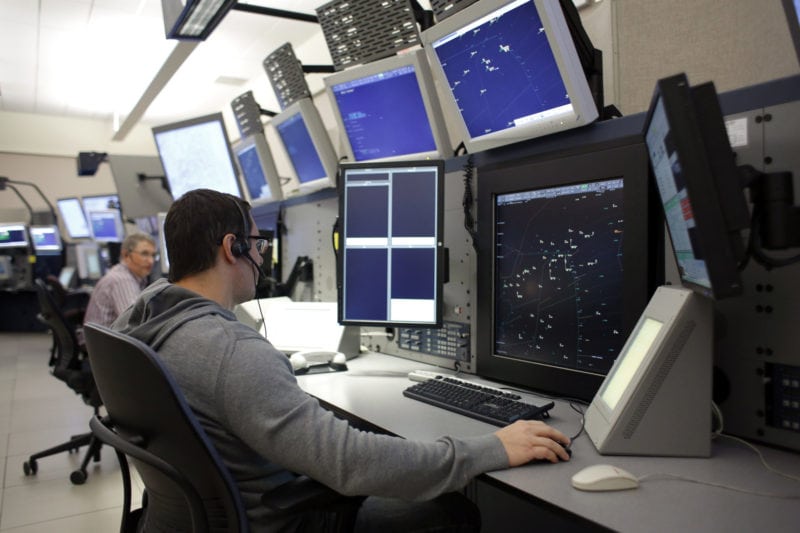
NAV Canada air traffic controllers, such as those pictured here, will use space-based ADS-B when the global Iridium NEXT constellation becomes operational in 2018. Photo: Nav Canada.
A milestone has been reached in the effort for 100% global air traffic surveillance, Aireon says. It has formally received control from Iridium Communications Inc. from the first ADS-B payload hosted on an Iridium NEXT satellite.
“When we first turned on the payloads after they reached orbit, we received an unexpected surprise – aircraft were immediately being seen in real-time,” Aireon CEO, Don Thoma, says. “We’ve already seen commercial aircraft, general aviation aircraft and helicopters, in oceanic and remote airspace that have never before had real-time surveillance. The real fun for us now begins as we take control and push the performance to see just what space-based ADS-B can do.”
In late January, the AireonSM ADS-B payload ran a self-diagnostic systems check. As Thoma said, no one was expecting to see any aircraft. But payload antennas were active and 150 ADS-B aircraft were detected over multiple-passes with thousands of ADS-B messages received and decoded. Aireon provided a list of firsts:
- The first officially received ADS-B message was Korean Airlines 530
- The first full ADS-B position message decode was SAS 4576
- The first U.S. carrier ADS-B message was UA 86 to Shanghai
- The first aircraft detected landing at an airport was NextJet 594 in Sweden
“Detecting NextJet 594 was an added bonus,” said Vincent Capezzuto, CTO for Aireon. “This is an early proof-point of the power of the Aireon ADS-B payload and its ability to detect aircraft close to the ground and in terminal airspace.”
The next step for Aireon is testing. The company is now implementing testing and validation processes, verifying the capability of the ADS-B payloads. This initial performance verification (IPV) process is to last about two weeks before transitioning to a detailed performance verification (DPV). That will focus specifically on calibrating the payloads for performance. IPV procedures were under development for over a year with inputs from Iridium, Harris Corporation, NAV CANADA and the FAA.
Aireon’s space-based ADS-B system will be operational in 2018, following completion of the Iridium NEXT satellite constellation.